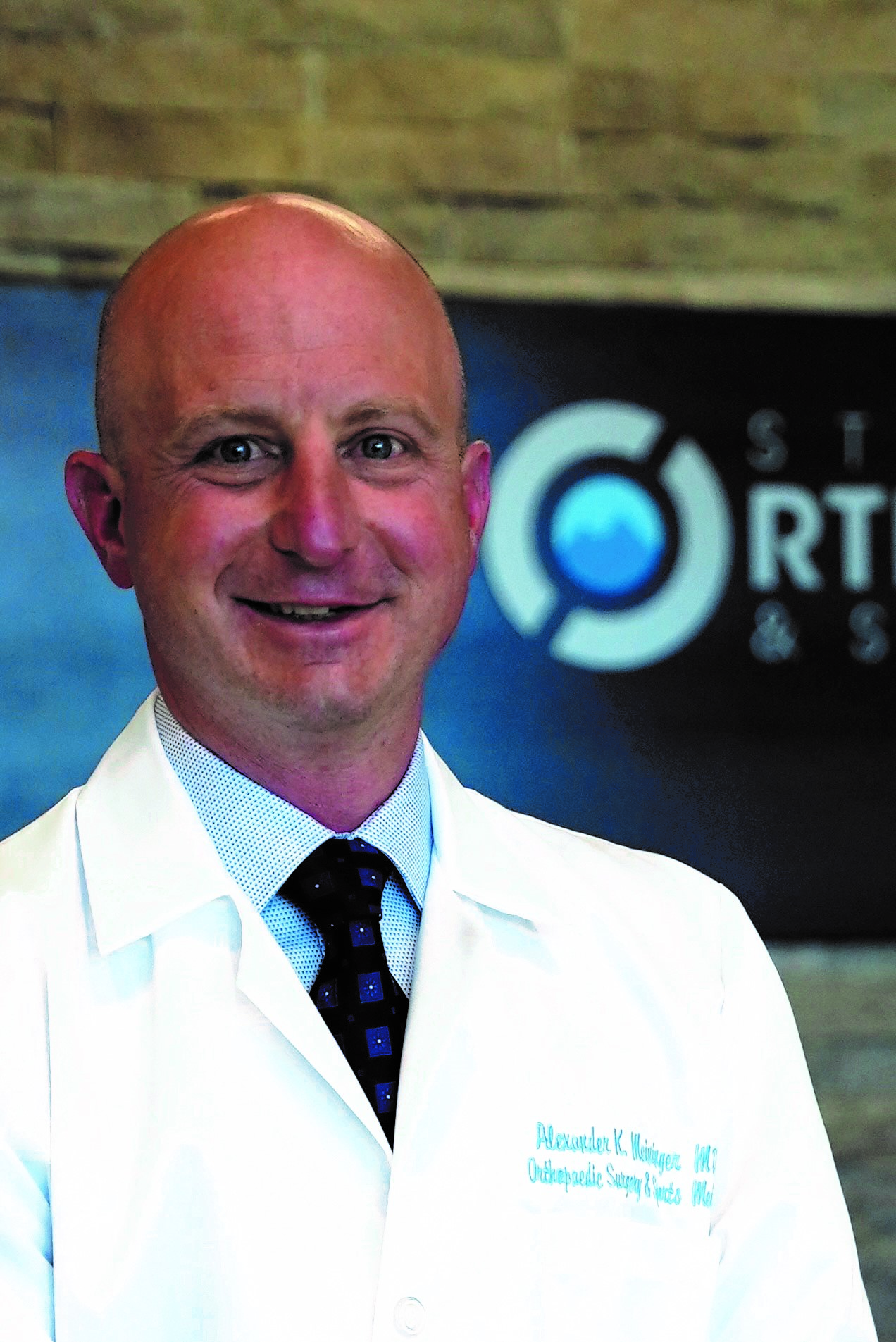Steamboat Surgery Center, an SCA Health-partnered ambulatory surgery center (ASC), is leading the way in providing an alternative to traditional ACL reconstructive surgery with the Bridge Enhanced ACL Restoration, or the (BEAR) implant.
Located in Steamboat Springs, Colorado, the ASC has become one of the nation’s leaders in BEAR implant procedures, which became FDA-approved in Dec. 2020 after over 15 years in development.
“We learned about the BEAR implant early on and wanted to be early adopters of this new ACL technology,” Alexander K. Meininger, M.D. of Steamboat Surgery Center, said.
Martha Murray, M.D. originally developed the proprietary technology at Boston Children’s Hospital Department of Orthopedic Surgery in 2001, with funding from the NFL Players Association, Boston Children’s Hospital, and the National Institutes for Health. She then went on the found Miach Orthopedics, which produces the BEAR implant.
A New Approach
What makes the implant different from traditional ACL reconstruction is how it avoids a tissue graft and allows the human body to heal itself, according to Meininger.
“What was Avant Garde thinking at the time was that you could stitch together the ligament if you provided a regenerative scaffolding for the knee, which could act as a conduit for the ligament to heal itself,” Meininger said.

Dr. Alexander K. Meininger, Steamboat Surgery Center, Steamboat Springs, CO
The process of ACL reconstruction has changed over time. Initially, surgeons worked to solve the problem by simply stitching the ACL into place, leading to negative results in the 1970s and 1980s. Adverse patient outcomes typically led to arthritis and, in rare cases, chronic dysfunction.
Modern techniques see the use of grafts, or tissue taken from elsewhere to replace the torn ligament. This could include muscles and tendons from the patient’s own body or donated tissue from cadavers. However, by using the BEAR implant, patients can now avoid a graft altogether and retain their native ACL with a more natural healing process. This allows the knee joint to focus on repairing the ligament.
“The knee joint is naturally bathed in fluid,” Meininger said. “As a result, it doesn’t have good healing potential in that area. Any scab or bleeding is likely going to be washed away through the normal cycle of the joint. The BEAR implant allows you to interpose a sponge, and the collagen or protein sponge holds the blood in, allowing the ligament to recover independently.”
Increased Patient Range
Recently Meininger performed the procedure on a 14-year-old multisport athlete. After injuring himself while skiing in the spring of 2022, the child shared a post on Meininger’s LinkedIn profile, showcasing his return to the slopes nine months later.
Differences between the BEAR implant and traditional ACL reconstruction make the process more available to a younger demographic. Meininger added that when performing the procedure on younger patients, he approaches preparation differently.
“The BEAR procedure doesn’t involve the 10mm sockets like a traditional reconstruction; instead, it only uses 3.5mm sockets,” he said. “When we are performing this procedure on a grown adult, we can place holes where we need to, but with a child or younger patient, I use X-rays so I can be as accurate as possible. We must be cautious when using these sharp objects around growing bodies to avoid interfering with the growth plate. The use of the smaller sockets also helps us in that regard.”
Eligibility
Determining patient eligibility for the procedure relies on several factors, notably age, and specifics of the injury. Patients must be between 12 – 65 years of age and they must receive the procedure within 50 days of the initial injury.
“It’s really important that the procedure be performed within 50 days of the injury,” Meininger explained. “Within 50 days, the body still has a suitable healing environment. We can capitalize on the traumatic swelling and maximize the body’s ability to take to the implant.”
Tear morphology also plays a role in determining if a patient is eligible for the implant. Meininger explains that the location of the tear on the ACL and the amount of remaining ligament are critical factors. Best-case scenarios see a large amount of ligament remaining, allowing the ligament to be stitched and inserted.
However, major tears or short stumps of ligament (less than 40% of the ligament remaining) are typically not eligible, according to Meininger. Major tears like this do not leave enough ligament for the implant to be successful; thus, alternative treatment options are required.
Recovery
Recovery from a BEAR implant procedure takes slightly longer than traditional reconstructive surgery, according to Meininger.
“That’s part of the delicacy of the BEAR implant,” he said. “You’re asking the body to heal itself, reincorporate the torn ligament, and heal it into the right position. As a result, that means that the patient will be on crutches and will have a limited range of motion as we work to increase the bend in the knee over six weeks.”
Meininger explains that with traditional procedures, patients with a grafted ACL will see an increased range of motion by the end of their first week of recovery. However, patients with BEAR implants undergo a slower process.
“It’s a little more delicate and a little slower going in the early phase,” Meininger said. “In randomized and clinical trials prior to BEAR’s approval, researchers saw that having patients return to sport in 5-6 months like traditional surgery was too early. This procedure takes about eight months to recover fully and be cleared to return to sports activities.”
The Future of Sport?
While the BEAR implant has only just recently become available, physicians, such as Meininger and Steamboat Springs Surgery Center, are taking full advantage of the opportunities it provides, especially in locations with a highly active population.
Meininger believes that similar procedures and technology to the BEAR implant will eventually become available to help treat issues in other areas of the body, such as the rotator cuff, and will ultimately grow to become commonplace in athletics.
“As it becomes more widely adopted, I believe it will become more accessible to all athletes, professionals and amateurs alike,” he said. “It really is incredible that this implant allows them to heal their own anatomy in this way and return to sport.”
To learn more about the BEAR implant from Dr. Alexander Meininger, click here.
Resources
Miach Orthopedics: https://miachortho.com/patients-and-families/bear-implant/
Interview with Dr. Alexander K. Meininger, Jan. 23rd, 2023





